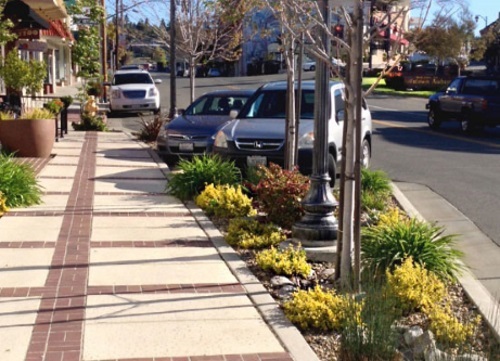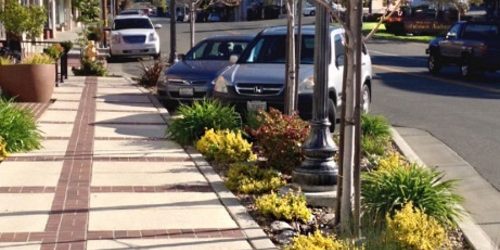The California Department of Transportation recently unveiled a new “complete streets” policy for all new transportation projects it funds or oversees in order to provide “safe and accessible options” for people walking, biking, and taking transit.
[Above photo by Caltrans]
A “complete street” policy seeks to expand mobility options for people of all ages and abilities, particularly those who are walking, biking, using assistive mobility devices, and riding transit. Caltrans said its “complete streets” requirement – which went into effect December 7, 2021 – offers several benefits, including enhancing safety and creating more sustainable transportation options to decrease dependence on driving and improving public health by encouraging active transportation like walking and biking.
The agency added that its new policy ultimately aims to “expand the availability” of “sustainable transportation options” to help meet the state’s climate, health, and equity goals.
“California must reduce dependence on driving without sacrificing mobility and accessibility,” explained Toks Omishakin, director of Caltrans, in a statement.
“As Caltrans and local transportation agencies prepare for the influx of new federal infrastructure funding, it is important that we provide safe, convenient, sustainable, and accessible alternatives to driving to achieve our climate goals while equitably serving all Californians,” he said.
Other state departments of transportation are deploying similar “complete street” strategies as well.
In February 2021, the South Carolina Department of Transportation adopted what it calls a “wide-ranging” complete streets policy for the state-owned highway system.
That policy requires the South Carolina DOT to work with the state’s regional transportation planning partners and regional transit providers to identify and include walking, bicycling, and transit needs as part of their regional visioning plans.
The agency said it would then tailor those plans to the “unique needs” of locales across the state, serving as a foundation for highway planning and design, construction, maintenance, and daily operations.


